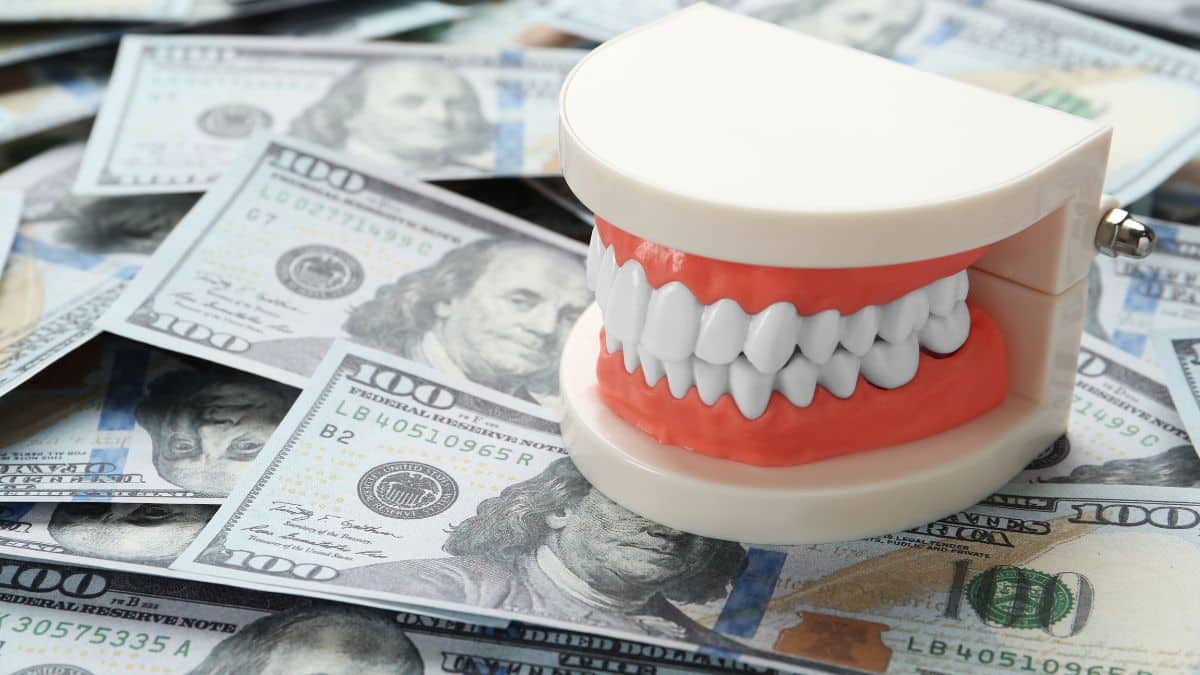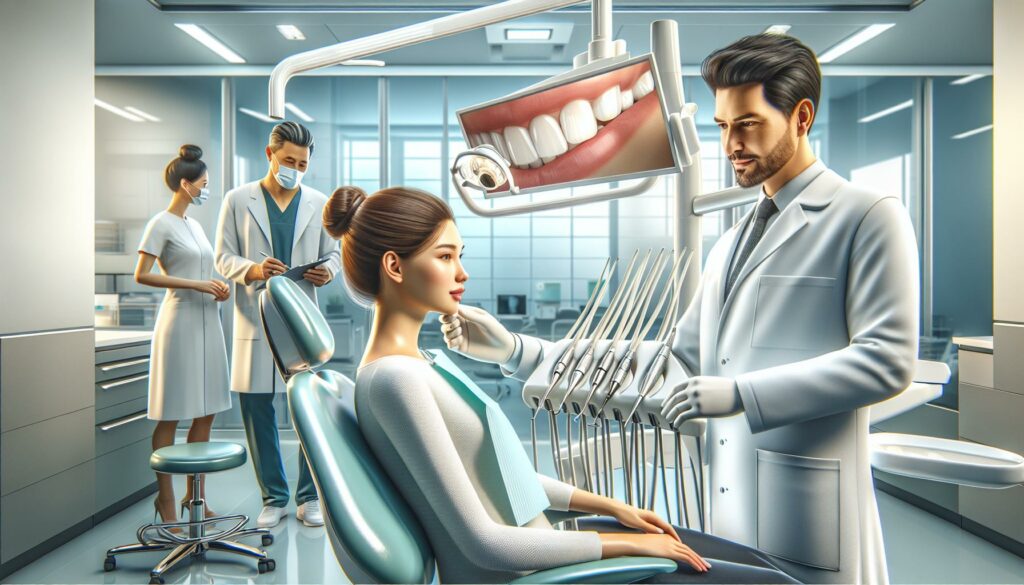Dentistry is a vital aspect of healthcare, but it is also one of the most expensive. Many people wonder why dental care is so expensive, and there are several reasons for this. One of the primary reasons is the high overhead costs associated with running a dental practice. Dentists must pay for rent or mortgage payments on their office, equipment, payroll, and the cost of technicians who work on dentures, braces, and crowns.
Another factor that contributes to the cost of dental care is the cost of health insurance. Many dental procedures are not covered by insurance, which means that patients must pay out of pocket. This can be a significant financial burden, especially for those who require extensive dental work. Additionally, taxes and other regulatory fees can also add to the cost of dental care. Despite these challenges, it is essential to find affordable dental care to maintain good oral health.
Why is Dentistry Expensive?

Dentistry is often expensive due to several factors that contribute to the high costs of dental procedures. Here are some of the reasons why dental care can be expensive:
Trained Professionals
Dentists are highly trained professionals who have completed several years of college, dental school, and specialized training. This training is expensive, and the costs are passed on to the patient. Dentists are required to stay up-to-date with the latest technology and techniques, which also adds to the cost of dental procedures.
Overhead Costs
Running a dental practice is expensive. Dentists have to pay for rent or mortgage payments on their office, utilities, equipment, and supplies. They also have to pay for staff salaries, including dental assistants and hygienists. These overhead costs can be significant, and they are reflected in the price of dental procedures.
Insurance
Dental insurance can be costly for both patients and dentists. Patients often have to pay high premiums for dental insurance, and dentists have to pay for malpractice insurance. Insurance companies often dictate the prices that dentists can charge for certain procedures, which can limit their ability to set their own prices.
Technology
Dental technology is constantly evolving, and new equipment and techniques can be expensive. However, these advancements can also improve the quality of care that patients receive. Dentists who invest in the latest technology may be able to provide better care, but this can also add to the cost of dental procedures.
In conclusion, dentistry can be expensive due to the high costs of training, overhead, insurance, and technology. However, it is important to prioritize dental care to maintain good oral health and prevent more costly dental problems in the future.
The Cost of Dental Services
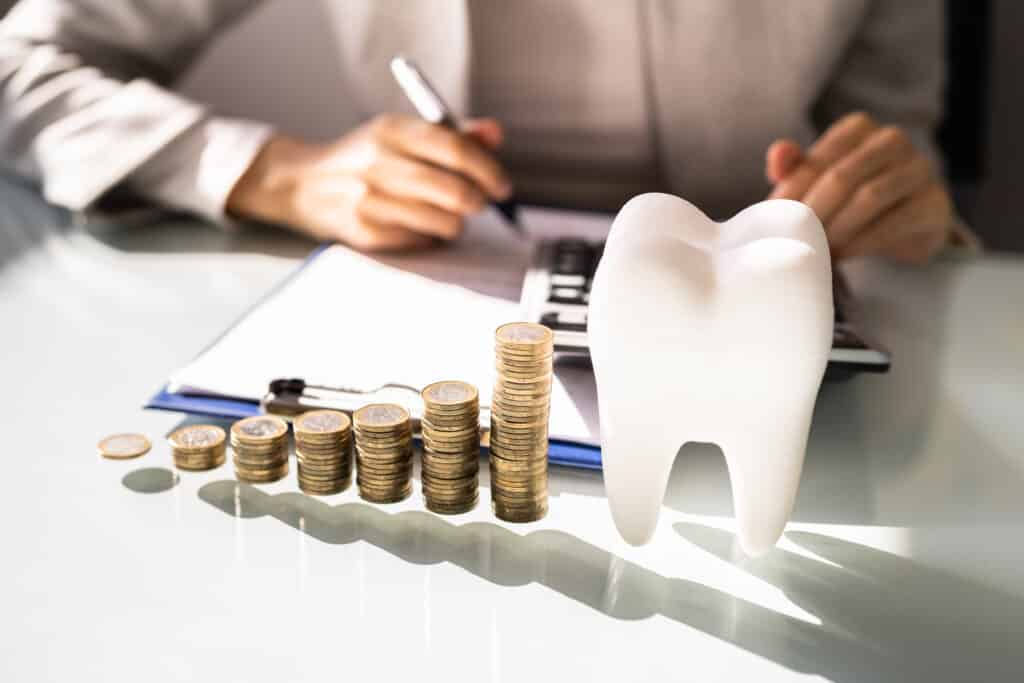
Dental services can be quite expensive, and the cost of dental care has been a topic of discussion for many years. There are several factors that contribute to the high cost of dental services, including:
-
Overhead costs: The cost of running a dental practice is quite high. Dentists have to pay for rent or mortgage payments on their office, utilities, and other expenses like staff salaries, equipment, and supplies. According to CBS News, anywhere from 60% to 80% of what a patient pays goes towards these costs.
-
Fees: The fees charged by dentists can vary depending on the type of service provided. According to Forbes Advisor, the cost of dental work can range from a few hundred dollars for a simple filling to several thousand dollars for more complex procedures like dental implants or braces.
-
Health insurance: Not all dental services are covered by health insurance, and even when they are, there may be limits on the amount of coverage provided. For example, some policies have annual and lifetime maximums that limit the amount of money that can be spent on dental services each year or over a lifetime.
-
Technicians: The cost of technicians who work on dentures, braces, and crowns can also contribute to the overall cost of dental services. These technicians are highly skilled and require specialized training, which can be expensive.
It’s important to note that the cost of dental services can vary depending on where you live and the specific dentist you see. However, finding affordable dental care is essential, especially in case of emergencies.
Overhead Costs in Dentistry

One of the main reasons why dentistry is so expensive is due to high overhead costs. Overhead costs are the expenses incurred by a business that are not directly related to the production of goods or services. In a dental office, overhead costs include everything from rent and utilities to supplies and equipment.
According to a study by Dental Economics, the median practice overhead in 2021 was 61.9%. This means that for every dollar earned by a dental practice, nearly 62 cents went towards overhead costs. This high overhead percentage can make it difficult for dental practices to generate a profit and can contribute to the high cost of dental care.
Some of the biggest overhead costs in dentistry include rent or mortgage payments, utilities, and supplies. Rent or mortgage payments can be especially high in desirable locations, making it difficult for dental practices to find affordable office space. Utilities, such as electricity and water, can also be expensive, particularly if a dental office requires specialized equipment or runs multiple shifts.
Supplies are another major overhead cost in dentistry. Dental offices require a wide variety of supplies, from dental instruments and materials to office supplies and cleaning products. These supplies can be expensive, and practices may need to purchase them in bulk to get the best prices.
Overall, overhead costs play a significant role in the high cost of dental care. While some overhead costs are necessary to run a successful dental practice, there are steps that practices can take to reduce these costs. By carefully managing expenses and finding ways to be more efficient, dental practices can help make dental care more affordable for their patients.
Investment in Dental Equipment and Technology
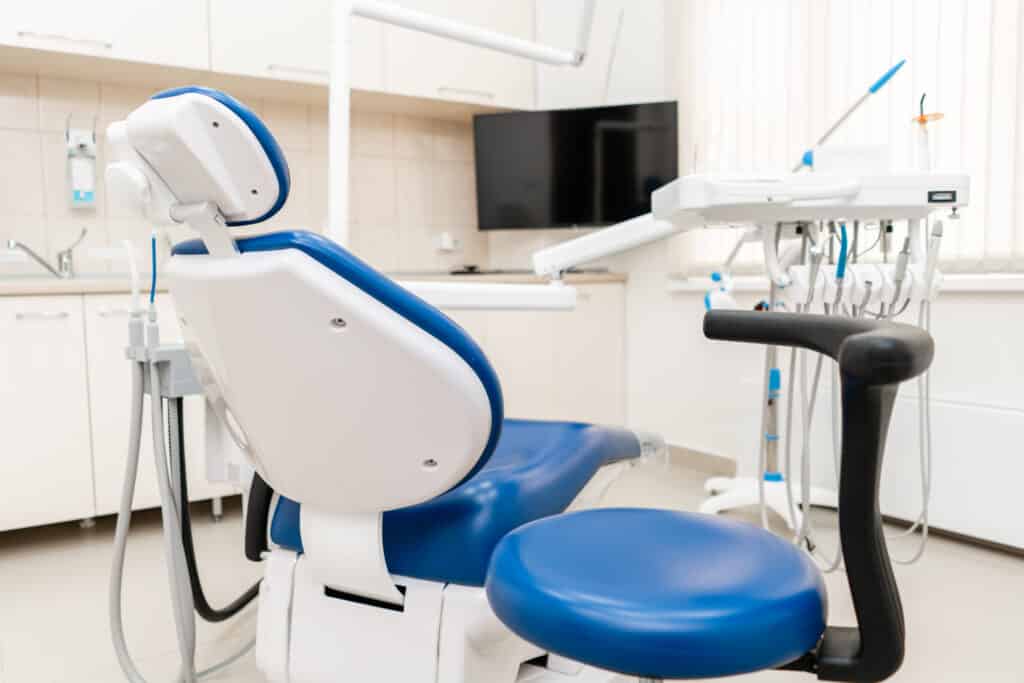
Dental equipment and technology are essential components of modern dental practices. Investing in the latest equipment and technology can help dentists provide better care to their patients, improve efficiency, and increase revenue. However, the initial investment can be significant, which is one of the reasons why dentistry can be expensive.
Equipment
Dental equipment includes everything from dental chairs to X-ray machines. The cost of equipment can vary widely depending on the quality and features of the equipment. For example, a basic dental chair can cost around $2,000, while a top-of-the-line chair can cost over $9,000. Other equipment, such as X-ray machines, can cost anywhere from $5,000 to $40,000.
Dental equipment typically has a lifespan of 5-10 years, so dentists need to budget for replacements and upgrades. Investing in high-quality equipment can help reduce maintenance and repair costs over the long term.
Technology
Advances in dental technology have revolutionized the field of dentistry. New technologies, such as digital X-rays, 3D printing, and intraoral scanners, have made diagnosis and treatment more accurate and efficient. However, these technologies can be expensive to implement.
For example, a 3D cone beam imaging system can cost over $100,000. However, this technology can provide dentists with detailed 3D images of a patient’s teeth and jaw, which can help with diagnosis and treatment planning.
Investment
Investing in dental equipment and technology can be a significant expense for dental practices. However, it is important to consider the long-term benefits of these investments. High-quality equipment and technology can improve patient care, increase efficiency, and ultimately lead to higher revenue.
Dentists should carefully consider their budget and needs when making equipment and technology investments. Calculating the return on investment (ROI) can help dentists determine whether a particular investment is worth the cost. Dentists can use the ROI formula to compare different investments and choose the ones that will provide the greatest long-term benefits.
Staffing and Payroll Expenses

One of the biggest expenses for dental practices is staffing and payroll. According to Henry Schein, the number of dental assistants per dentist in the US labor force has increased significantly over the years. In 1980, there were approximately 1.3 dental assistants per dentist, but by 2010, that number had skyrocketed to over three dental assistants per dentist. This increase in staffing has led to a significant increase in payroll expenses for dental practices.
Dental practices require a variety of staff members, including receptionists, dental hygienists, dental assistants, and administrative staff. Each staff member plays a crucial role in the smooth operation of the practice. For example, dental hygienists are responsible for cleaning teeth, taking X-rays, and educating patients on proper oral hygiene. Receptionists are responsible for scheduling appointments, answering phones, and managing patient records. Dental assistants help the dentist during procedures and prepare equipment and materials.
The cost of staffing and payroll for dental practices can vary depending on factors such as location, experience, and education. For example, according to Weave, the average salary for a dental hygienist in the United States is around $70,000 per year. Dental assistants, on the other hand, earn an average of $40,000 per year.
To manage staffing and payroll expenses, dental practices may need to consider outsourcing certain tasks or limiting in-office payment arrangements. Many practices have reduced their front desk labor costs by maximizing payment in full at the time service is rendered, by outsourcing financing through third parties, and by limiting in-office payment arrangements to automatic bank draft or automatic credit card charge to minimize billing and collection activities, according to DentistryIQ.
Overall, staffing and payroll expenses are a significant contributor to the high cost of dentistry. Dental practices must carefully manage these expenses to remain profitable while still providing quality care to their patients.
Quality of Service and Patient Experience

When it comes to dental care, quality of service and patient experience are essential factors in determining the cost of treatment. Dentists who provide high-quality service and ensure a positive patient experience typically charge more for their services.
Patients who receive high-quality dental care are more likely to have successful outcomes and fewer complications. They may also require less follow-up care, which can ultimately save them money in the long run.
In addition to the quality of service, patient experience is also a crucial factor in determining the cost of dental care. Patients who have a positive experience with their dentist are more likely to return for future treatments and recommend their dentist to others. As a result, dentists who prioritize patient experience may charge more for their services.
To ensure a positive patient experience, dentists may invest in amenities such as comfortable waiting rooms, friendly staff, and advanced technology. These factors can contribute to a more pleasant and stress-free experience for patients.
Overall, the quality of service and patient experience are important factors in determining the cost of dental care. Patients who prioritize these factors may be willing to pay more for high-quality dental care.
The Role of Dental Insurance

Dental insurance is a type of health insurance that covers the cost of dental care. It is designed to help individuals and families pay for routine dental checkups, cleanings, and other dental procedures. However, dental insurance may not cover the full cost of certain procedures, such as orthodontic treatment or cosmetic dentistry.
One of the reasons why dentistry is so expensive is that dental insurance benefits have not kept up with the rising cost of dental care. According to a CBS News report, the maximum annual benefits for dental insurance have not changed in the 50 years since dental insurance became available. This means that dental insurance provides only minor cost assistance, and there is a widening divide between the cost of dental care and the benefits provided by dental insurance.
Another factor that contributes to the high cost of dental care is the administrative overhead associated with dental insurance. Dentists must deal with a lot of paperwork and bureaucracy in order to get paid by insurance companies. This administrative burden can be time-consuming and expensive, and it can drive up the cost of dental care.
Overall, dental insurance can help individuals and families save money on routine dental care. However, it may not cover the full cost of certain procedures, and the benefits provided by dental insurance have not kept up with the rising cost of dental care. As a result, individuals and families may still face high out-of-pocket costs for dental care, even if they have dental insurance.
Dental Education and Student Loans
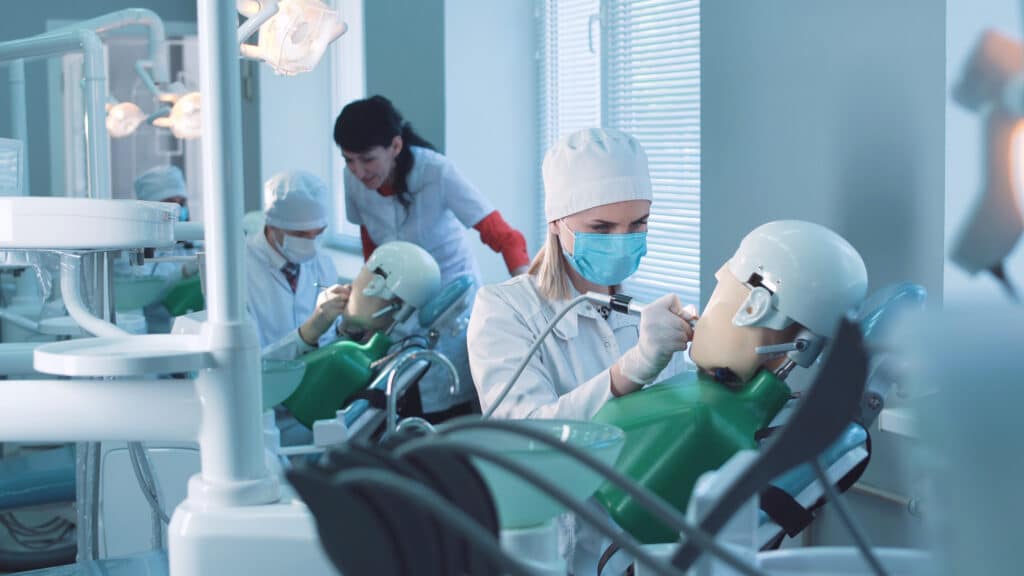
Dentistry education is one of the most expensive of any professional or graduate program. According to the American Dental Education Association, the average debt per dental school graduate in 2020 was $304,824. The cost of dental school is high, and many students rely on student loans to cover the cost.
Student loans can affect new graduates differently, just as the options to scaling that mountain of debt can also vary. Private refinancing options and federal loan repayment programs are available, but each has its own pros and cons.
Private refinancing options can provide lower interest rates, but they may not offer the same protections and benefits as federal loan repayment programs. Federal loan repayment programs, such as income-driven repayment plans, can offer lower monthly payments and loan forgiveness after a certain number of years of payments. However, they may not be available to all borrowers and may have strict eligibility requirements.
Dental education debt can be crushing in magnitude, and it is also almost impossible relative to salary. Dentists may earn a high salary, but it can take years to pay off student loans and other debts. The high cost of dental education and the burden of student loans can make it harder for dentists to succeed in their profession.
In conclusion, dental education and student loans are major factors contributing to the high cost of dentistry. While there are options for managing student loan debt, it is important for students to carefully consider their options and plan for the future to ensure their success in the field of dentistry.
The Impact of Regulation and Taxation
Regulation and taxation play a significant role in the cost of dental care in America. While regulations are necessary to ensure quality and safety, excessive regulations can increase costs for dental practices and ultimately, patients.
Dental practices must comply with a range of regulations at the federal, state, and local levels. These regulations cover everything from sterilization procedures to record-keeping requirements. Compliance with these regulations can be time-consuming and expensive, as dental practices must invest in equipment and staff to ensure compliance. Additionally, regulations can limit the ability of dental practices to innovate and offer new services, which can ultimately limit access to care.
Taxation is another factor that contributes to the high cost of dental care in America. Dental practices are subject to a range of taxes, including income taxes, property taxes, and payroll taxes. These taxes can be a significant burden for dental practices, particularly for small practices that may not have the resources to hire tax professionals or invest in tax planning strategies.
One tax that has a significant impact on dental practices is the self-employment tax. This tax is levied on self-employed individuals, including dentists, and is used to fund Social Security and Medicare. The self-employment tax can be a significant burden for dentists, as they must pay both the employer and employee portions of the tax.
In addition to taxes, dental practices are also subject to fees and assessments from various government entities. For example, dental practices may be required to pay fees to state dental boards, professional organizations, and licensing agencies. These fees can add up quickly and increase the cost of doing business for dental practices.
Overall, regulation and taxation are significant factors that contribute to the high cost of dental care in America. While regulations and taxes are necessary to ensure quality and safety, excessive regulations and taxes can increase costs for dental practices and ultimately, patients.
The High Cost of Dental Procedures
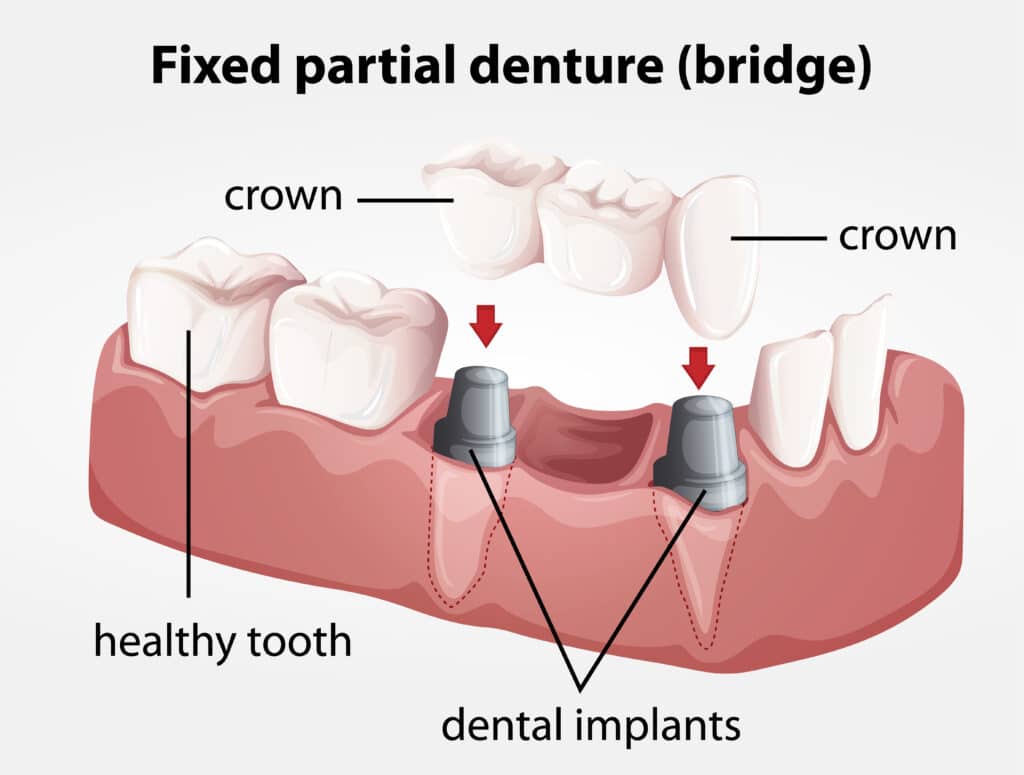
Dental procedures are known to be quite expensive, and the cost can vary widely depending on the type of treatment needed. Some of the most common dental procedures that can be costly include crowns, implants, dentures, and cosmetic dentistry.
Crowns
Crowns are used to repair teeth that are damaged or decayed. They are custom-made to fit over the damaged tooth to restore its shape, size, and strength. The cost of a crown can range from $800 to $2,000 or more, depending on the material used and the complexity of the procedure.
Implants
Dental implants are used to replace missing teeth. They are surgically implanted into the jawbone and act as a replacement for the tooth root. Implants can be quite expensive, with costs ranging from $1,500 to $6,000 per tooth. The cost can vary depending on the location, the complexity of the procedure, and the type of implant used.
Dentures
Dentures are used to replace missing teeth and can be either partial or complete. Partial dentures are used when only a few teeth are missing, while complete dentures are used when all teeth are missing. The cost of dentures can vary widely, from $300 for a basic set to $5,000 or more for a complete set of custom-made dentures.
Cosmetic Dentistry
Cosmetic dentistry includes a range of procedures that are used to improve the appearance of teeth, such as teeth whitening, veneers, and braces. Cosmetic dentistry can be quite expensive, with costs ranging from $500 for teeth whitening to $8,000 or more for a full set of veneers.
Overall, the high cost of dental procedures can be attributed to a number of factors, including the cost of materials, the complexity of the procedure, and the level of expertise required to perform the procedure. While dental procedures can be expensive, it is important to prioritize dental health to avoid more costly dental problems in the future.
Affordability and Accessibility of Dental Care
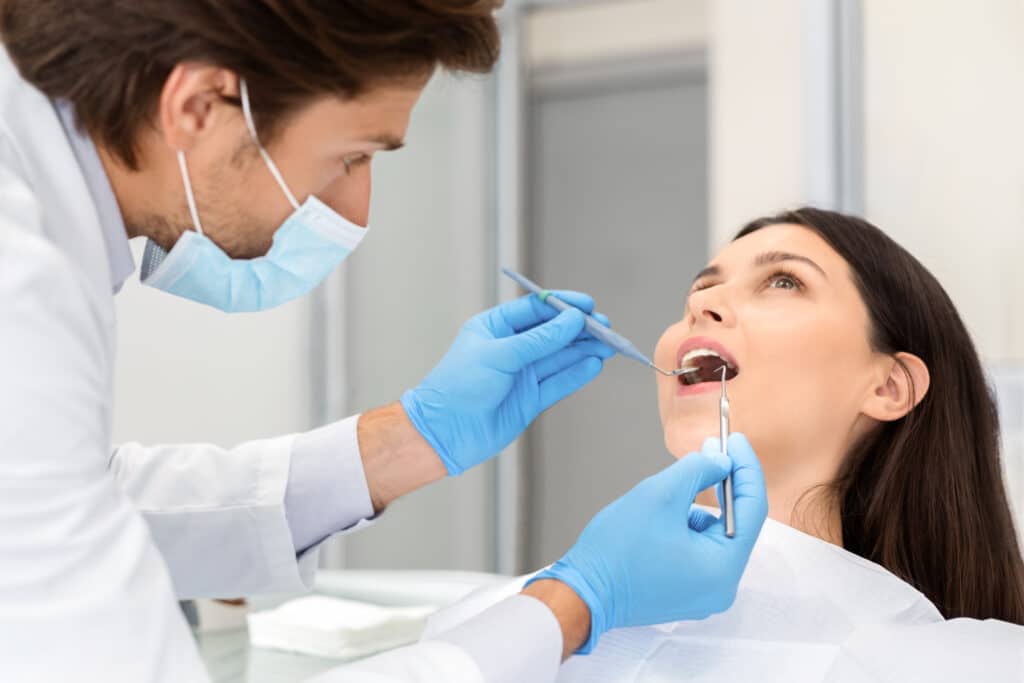
Dental care is essential for maintaining good oral health, but unfortunately, it can be quite expensive. This can make it difficult for some people to access the care they need. However, there are some options available for those who are looking for affordable dental care.
One option is to look for dental clinics that offer discounted or low-cost services. Some clinics offer these services to patients who are uninsured or underinsured. Other clinics may offer sliding scale fees based on a patient’s income. Federally Qualified Health Centers (FQHCs) are another option for affordable dental care. These centers receive funding from the government to provide low-cost or free services to patients who cannot afford to pay for care.
Another way to access affordable dental care is through dental schools. Dental schools often have clinics where students provide dental services under the supervision of licensed dentists. These clinics may offer services at a lower cost than private dental practices.
In addition to seeking out affordable dental care, it’s important to understand the value of dental care. Regular dental check-ups and cleanings can help prevent more serious and expensive dental problems from developing. By investing in preventive care, patients can save money in the long run by avoiding costly procedures.
Overall, while dental care can be expensive, there are options available for those who are looking for affordable care. By understanding the value of dental care and seeking out affordable options, patients can access the care they need to maintain good oral health.
Conclusion
In conclusion, the high cost of dentistry can be attributed to various factors, including the cost of equipment, rent or mortgage for the premises, payroll, taxes, health insurance, and the cost of technicians who work on dentures, braces, and crowns. Additionally, the high cost of dental education and the need for continuous training and certification also contribute to the overall expense of dental care.
While the cost of dental care may seem daunting, it is important not to neglect your oral health. Regular dental check-ups and preventative care can help prevent more serious and costly dental issues down the line. It is also important to shop around for affordable dental care options and to ask your dentist about payment plans or financing options.
Overall, while the cost of dentistry may seem high, it is important to prioritize your oral health and seek out affordable options when possible. By taking care of your teeth and staying on top of preventative care, you can help keep dental costs down in the long run.

